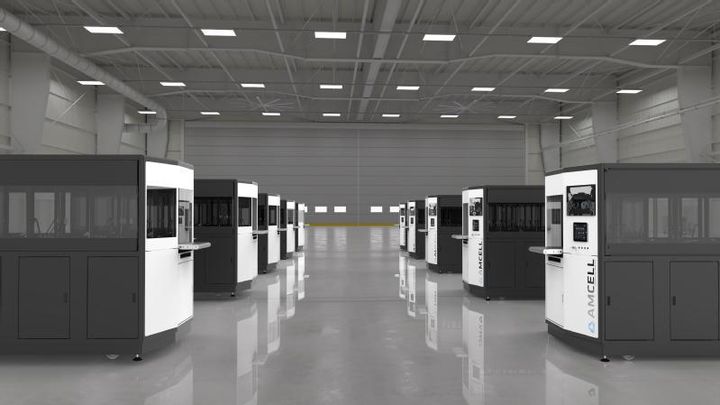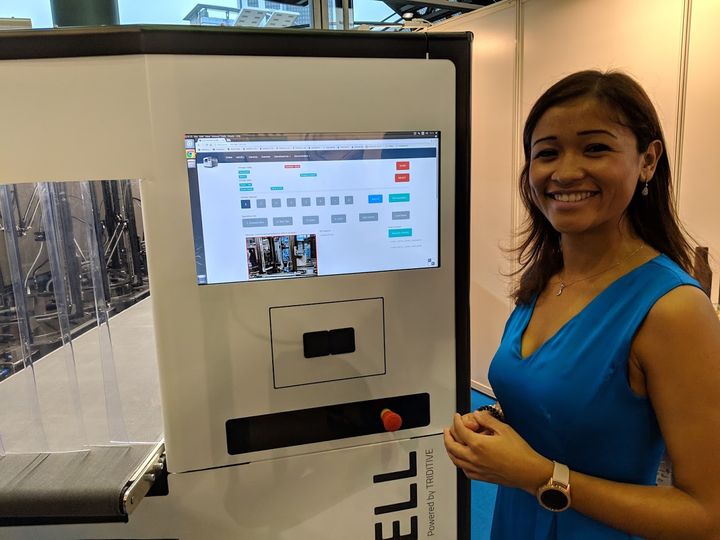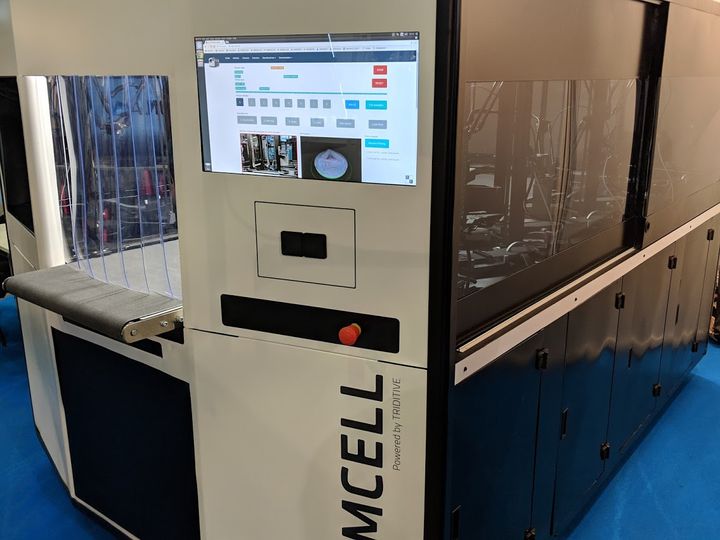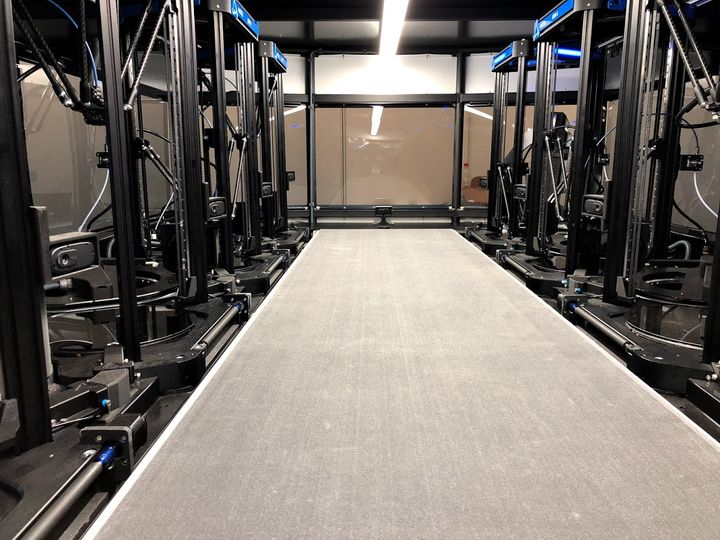
SPONSORED CONTENT
Triditive Additive Manufacturing has closed a major investment round.
The Spanish company has been quietly developing an automated system for additive manufacturing that is quite different from other offerings.

We first saw their system at Formnext 2018, where they explained the uniqueness of the AMCELL system. We spoke with CEO Mariel Díaz, where she explained the system could deliver as many as 10,000 parts per month when in production.
3D Print Automation Challenges
While it’s now possible to create low-volume manufacturing sites by deploying arrays of lower-cost 3D printers, there are still issues when operating printer farms at scale. These 3D printer farms typically require considerable amounts of manual effort to keep them running.
3D printers must have filament (or other material) loaded, prints must be removed, print trays cleaned and set up, jobs must be dispatched to ready machines, etc. For larger 3D print farms, this seemingly intermittent work suddenly becomes a full-time, constant effort.
And as we all know, manual labor is perhaps the most expensive part of the 3D print lifecycle. Reducing that cost is the philosophy behind Triditive Additive Manufacturing’s AMCELL system.
AMCELL System

There are several approaches for achieving automated 3D printing, but the method selected by Triditive Additive Manufacturing for their AMCELL system involves the movement of print plates. I briefly viewed an early version of the system in 2018 and was impressed with the concept.
3D prints take place in the normal manner, but after job completion the print plate is shuffled along an internal pathway where parts can be collected. Meanwhile, new print plates are automatically loaded for subsequent prints. The system then knows which printers are available and routes queued jobs to them. Large amounts of 3D print material are stored on board to minimize material loading tasks.
As you might imagine, there is a significant software component to the system to manage the eight 3D printers and automation systems within the AMCELL. Triditive Additive Manufacturing has developed a system they call “EVAM” to do so.

EVAM manages job queues and dispatching, and even includes features to allow for high-priority work to take precedence. And all this can be monitored and controlled remotely.
You may have assumed the eight 3D printers are capable of 3D printing in various polymer materials, and you’d be correct. But Triditive Additive Manufacturing has an interesting advantage because they also support metal 3D printing.
This is accomplished by their “Automated Multimaterial Deposition” (AMD) process. The result of AMD is a “green” part that is composed of both metal particles and a binder. After removal from the AMCELL green parts can undergo a debindering process, followed by a sintering stage in a furnace to fuse the metal particles together and form a fully solid metal part.
Triditive Additive Manufacturing Seed Round
The AMCELL is designed for production use, and as you might guess from its name, the idea is to place multiple units in a factory to scale production throughput.
Manufacturers are now beginning to understand the benefits of 3D printing technology, generating an enormous market potential for automated solutions such as the AMCELL. While the prototyping market was large, the production manufacturing market is many times larger.
Triditive Additive Manufacturing’s market position in the space is excellent, and this has no doubt helped lead to their most recent investment seed round. They received US$1.8M from a number of different parties, including both new investors and prior investors such as Stanley Ventures and Techstars.
What will Triditive Additive Manufacturing do with the new funds? They say:
“Triditive will use the investment to accelerate and support the 3D-printing industry by providing automated additive manufacturing systems heading to the Factory of the future. Triditive provides advanced robotics powered by machine learning to bring additive manufacturing to the production floor thanks to its mass production and metal-polymer printing capacity reducing the cost of scaling production with additive manufacturing.”
While Triditive doesn’t say specifically, it’s likely they will use the money to expand production and sales reach.
If you’re considering production additive manufacturing and need to do so with minimal manual effort, Triditive’s AMCELL is certainly an excellent option.
